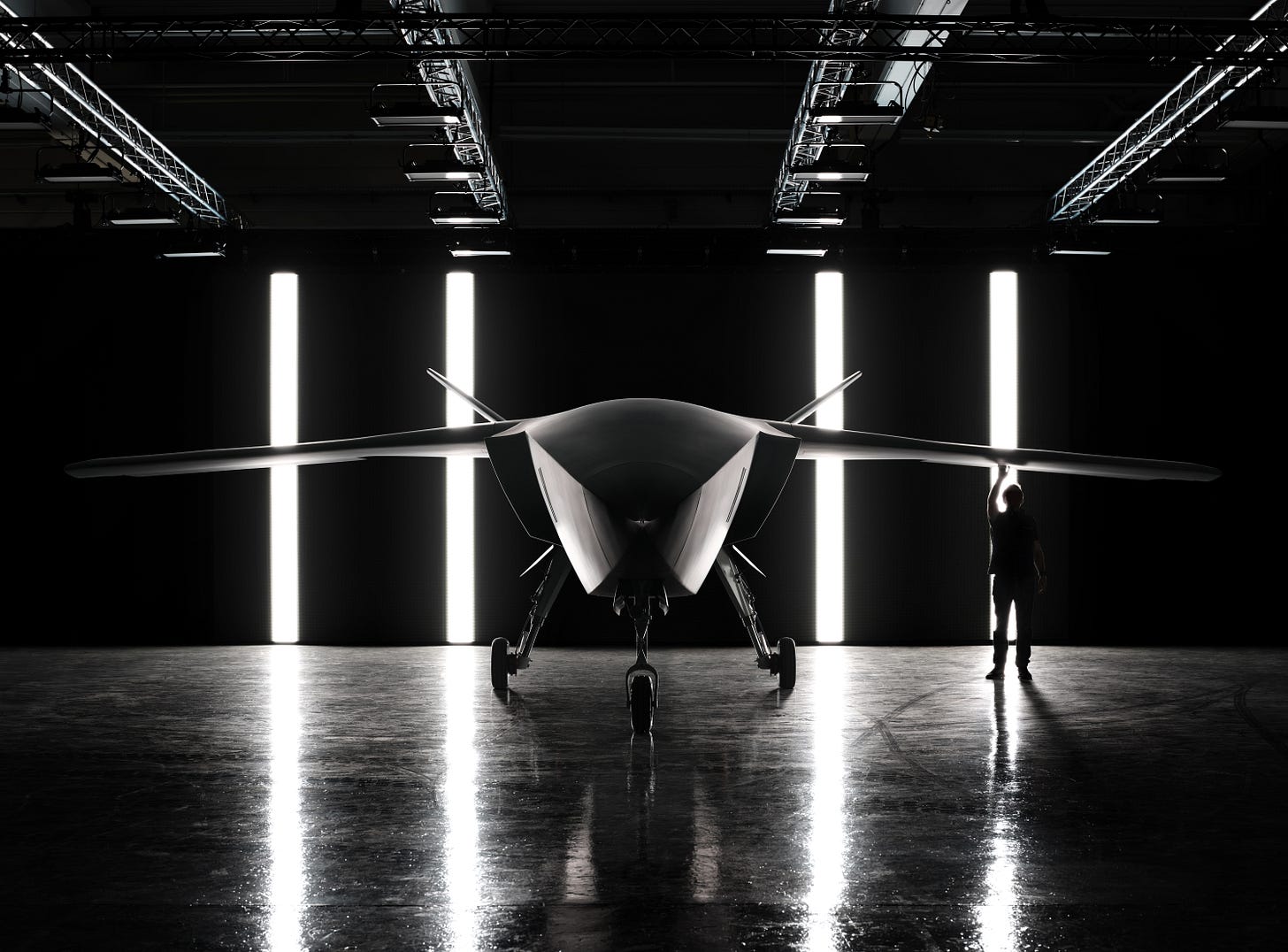Helsing Unveils CA-1 Europa, Its First AI-Powered Fighter Jet
Built in just 14 weeks after acquiring GroB Aircraft, the prototype marks Helsing’s bold move from AI software to full-spectrum air combat systems.
On a rainy day in a Bavarian hangar, surrounded by hills covered in trees changing colour with the seasons and cornfields ready for harvest, the Munich-based unicorn Helsing dramatically unveiled its newest product: an uncrewed aerial combat vehicle called the CA-1 Europa. Helsing said the UCAV will be capable of single asset missions, swarms, deep strike, reconnaissance, and surveillance — at an (unspecified) fraction of the €80M-100M cost of a fighter jet.
The event was clearly very important to those backing Helsing, with early backers General Catalyst’s Jeannette zu Fürstenberg and Shakil Khan from Prima Materia in attendance, along with Saab who has put money into the company. And rightly so.
The CA-1 represents a big leap for Helsing, which has diversified substantially since its founding in 2021, going from a software-only “AI for Democracies” company, to manufacturing strike drones, and now to building what is essentially a fighter jet competitor capable of high-subsonic speeds.
The writing was on the wall back in June when Helsing announced the acquisition of GroB Aircraft. Just 14 weeks after the deal closed, the CA-1 Europa design study was revealed.
But while today’s reveal speaks to the company’s ambitions and what it is working on right now, it’s not yet complete: what Helsing revealed today was a prototype and according to Stephanie Lingemann, Program Manager, Helsing, the UCAV will be ready for first flight by 2027.
This speed is the result of several factors: Helsing has raised more than $1 billion to date in private funding, most of which has been put into product development, it says, often in collaboration with partners who are willing to move at the startup speed.
GroB, a small manufacturer based in the hills of Bavaria, began its collaboration with Helsing prior to the acquisition, but the CA-1 Europa effort wasn’t started until the partnership was announced. In a press conference following the announcement, co-CEO and co-founder of Helsing Torsten Reil estimated that Helsing has funnelled hundreds of millions of Euros into this project alone.
The approach of building ‘configurable hardware’ — shells that can in turn be used and modified for a variety of payloads and functions according to customer demand — is starting to spread across defence tech startups, notably the Tiberius missile and now the CA-1 Europa.
Considering Reil’s software background, Helsing’s trajectory tracks. The CA-1 Europa is almost like a bus, with the ability to integrate different systems and payloads, depending on need. It will all be driven by Helsing’s Centaur AI agent, which now exceeds human performance in testing environments, according to Reil.
When asked about what this type of product might reveal about adversaries’ capabilities, Reil said while it is impossible to know what autonomous software is in development, China displayed several similar systems in its recent military parade, so the urgency remains to build deterrence in Europe.


